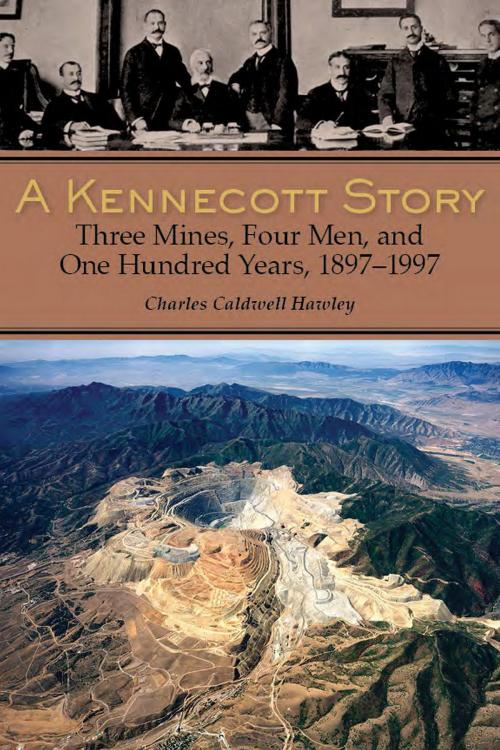A Kennecott Story
Three Mines, Four Men, and One Hundred Years, 1887-1997
Nonfiction, Science & Nature, Technology, Mining, History, Americas, United States| Author: | Charles Caldwell Hawley | ISBN: | 9781607813712 |
| Publisher: | University of Utah Press | Publication: | August 20, 2015 |
| Imprint: | University of Utah Press | Language: | English |
| Author: | Charles Caldwell Hawley |
| ISBN: | 9781607813712 |
| Publisher: | University of Utah Press |
| Publication: | August 20, 2015 |
| Imprint: | University of Utah Press |
| Language: | English |
While copper seems less glamorous than gold, it may be far more important. Copper proved vital to the industrial revolution and indispensable for electrification of America. Kennecott Copper Corporation, at one time the largest producer of copper in the world, thus played a key role in economic and industrial development. This book recounts how Kennecott was formed from the merger of three mining operations (one in Alaska, one in Utah, and one in Chile), how it led the way in mining technologies, and how it was in turn affected by the economy and politics of the day.
As it traces the story of the three mines, the narrative follows four mining engineers—Stephen Birch, Daniel Cowan Jackling, William Burford Braden, and E. Toppan Stannard—self-made men whose technological ingenuity was responsible for much of Kennecott’s success. While Jackling developed economies of scale for massive open-pit mining in Utah, Braden went underground in Chile for a caving operation of unprecedented scale for copper. Meanwhile, Birch and Stannard overcame the extreme challenges of mining rich ore in the difficult climate of Alaska and transporting it to market. The Guggenheims, who brought these three operations together provided the funding without which the infrastructure necessary for the mining operations might not have been built. The railroad required for the Alaska mine alone cost more than three times what the United States had paid to buy all of Alaska only forty-five years earlier.
As a geologist with first-hand knowledge of mining, author Charles Hawley aptly describes the technology behind the Kennecott story in a way that both specialists and the general reader will appreciate. Through engaging stories and pertinent details, he places Kennecott and the copper industry within their historical context and also allows the reader to consider the controversial aspects of mineral discovery and sustainability in a crowded world where resources are limited.
While copper seems less glamorous than gold, it may be far more important. Copper proved vital to the industrial revolution and indispensable for electrification of America. Kennecott Copper Corporation, at one time the largest producer of copper in the world, thus played a key role in economic and industrial development. This book recounts how Kennecott was formed from the merger of three mining operations (one in Alaska, one in Utah, and one in Chile), how it led the way in mining technologies, and how it was in turn affected by the economy and politics of the day.
As it traces the story of the three mines, the narrative follows four mining engineers—Stephen Birch, Daniel Cowan Jackling, William Burford Braden, and E. Toppan Stannard—self-made men whose technological ingenuity was responsible for much of Kennecott’s success. While Jackling developed economies of scale for massive open-pit mining in Utah, Braden went underground in Chile for a caving operation of unprecedented scale for copper. Meanwhile, Birch and Stannard overcame the extreme challenges of mining rich ore in the difficult climate of Alaska and transporting it to market. The Guggenheims, who brought these three operations together provided the funding without which the infrastructure necessary for the mining operations might not have been built. The railroad required for the Alaska mine alone cost more than three times what the United States had paid to buy all of Alaska only forty-five years earlier.
As a geologist with first-hand knowledge of mining, author Charles Hawley aptly describes the technology behind the Kennecott story in a way that both specialists and the general reader will appreciate. Through engaging stories and pertinent details, he places Kennecott and the copper industry within their historical context and also allows the reader to consider the controversial aspects of mineral discovery and sustainability in a crowded world where resources are limited.















